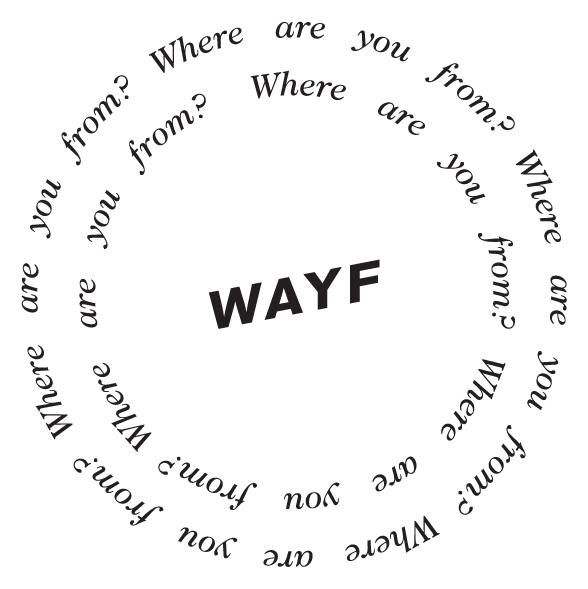Julie Fenwick
Race, otherness and 'Where are you from?'
The first time the idea of being different really penetrated my thoughts was when I was eight years old. I was in the playground, it was Canteen Bandana Day and four friends and I had just bought one each in the Australian flag design. Almost immediately I was approached by two boys in the lower grade who, pointing at my bandana, said: ‘You’re not Australian, you’re from another country’. Confused at first, I laughed. But when the realisation of what they’d said finally washed over me, I was paralysed.
I was born and bred in Australia; raised in an all-white community, enrolled into all-white schools and had never spent much time with the part of me who made me visibly brown – my Solomon Island mother. Understanding my own identity was chaotic. Before that moment I’d never thought about the colour of my skin or the texture of my hair, but suddenly it struck me. I was different. Different, at least, to the majority around me anyway.
Six years on, with this realisation strapped tightly to my back, I moved to a private school where moral conduct upheld Christian values; reinforced with great intensity. A nickname emerged for me: ‘Blacky’. I was a bit of a token, almost a mascot, or at least that’s what the chip on my shoulder led me to believe. But I went along with it, it’s hard to say why but I think it came down to my desire to be accepted.
Turning the joke back onto myself was a way to restrict and control the power others had over my identity. I was self-deprecating and explicitly racist; I normalised the use of the word n****, which my friends chirped perpetually, unrestricted. After all this I told myself I was in charge, even though, when it really came down to it, I wasn’t. When I tried to go against it I was too sensitive, when I reinforced it, I was cool.
When I was 18, before I moved to Melbourne… I experienced being fetishised for the first time. I realised what was happening when he muttered the words, ‘I’ve never liked black girls before you, but now they’re all I can think about.’ He would then continue to point out every dark-skinned woman we crossed paths with, referring to them as ‘African Queens’. Essentially, what I was hearing was that there was no intersection between character and appearance, what mattered to him was absolutely what I looked like; specifically the colour of my skin.
Now, at the age of 21, I’ve had enough experience to create a sort of rule book. When I’m at work behind a bar and men, who are usually white and over 30, blurt out the words, ‘Where are you from?’ I know they are probably hitting on me. When a woman, as racially ambiguous as me, asks the same question she is interested and relatable.
There are many rules and regulations that surface when this question is asked. It isn’t a light question. You learn to feel safe in some interactions and apprehensive in others. Essentially you’re giving away a piece of information that, throughout the course of your life has been majorly influential in shaping who you are and how you think about yourself; where you fit in, who you should support, and majorly, where you find a sense of belonging.
Being racially ambiguous, and belonging neither to one or the other, is hard. Not just because of the external prejudice it means you face from peers and society, but also because of your own internal-critique. Am I white? Am I black? If I’m neither then who will accept me? Is there anyone else like me? Will I perpetually float through this crowd of faces, never truly accepted?
Though these questions might never be answered, and true equality perhaps will only come when we evolve to the point of collectively being beige, what stands true is that the power of identity belongs solely to the individual – not to the majority – and what they choose to do with it, and how they choose to present is entirely up to them.

